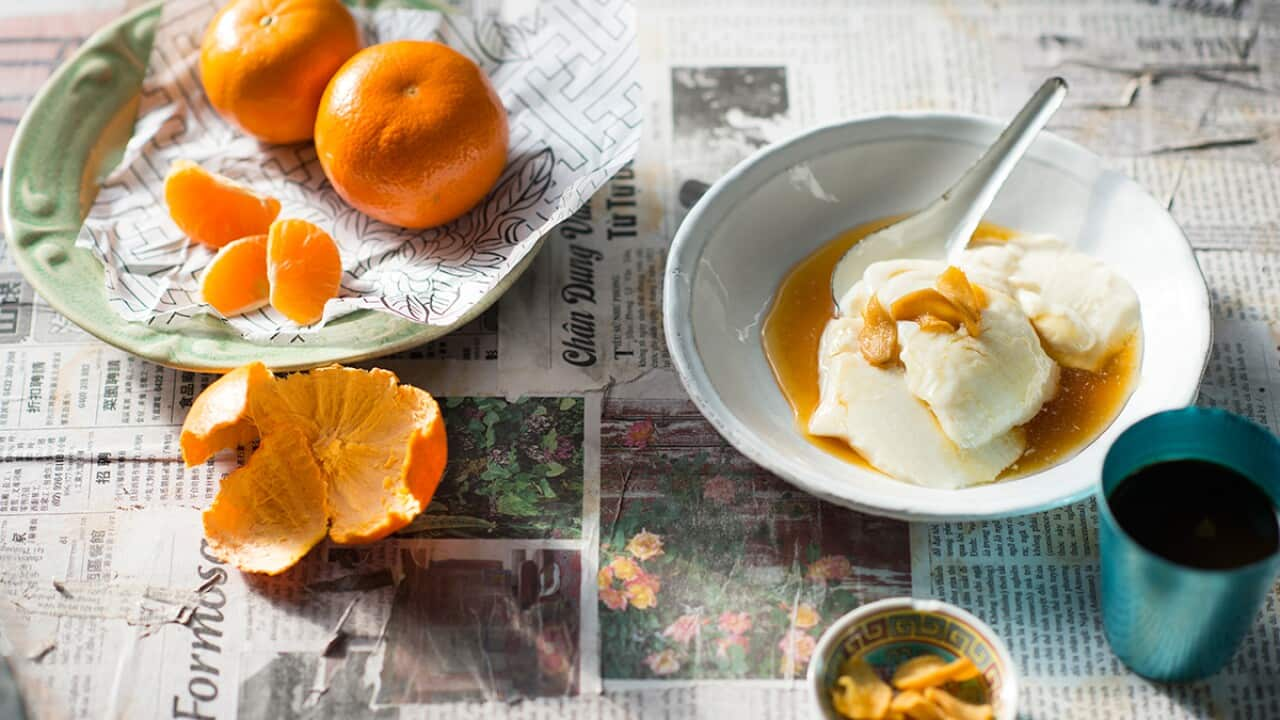Here are just a few of the things we know to be true about tofu, the little soy protein that’s etched its way permanently onto plates around the world since it was first made in the Chinese Han Dynasty, circa 2000 years ago:
- Although it’s traditionally an Asian diet staple (featuring heavily in the cuisines of East Asian countries like China, Japan and Korea), its popularity knows no bounds. Big supermarket chains stock almost every variety, and there’s a good chance it’s featured on your local café’s brunch menu – no matter where you are in the world.
- It’s changed the lives of vegetarians, vegans and Meatless Monday subscribers forever. So no to sad salad, and yes to a substance that actually absorbs marinades, sauces and flavours, just like meat.
- It’s actually good for you – as a soya product derived from bean curd, it’s low in calories, and an excellent source of amino acids, iron, calcium and other micronutrients. Even if it’s slathered in batter and deep-fried () it’s doing more for you than a piece of bacon.
- It could very well take first prize in the vegetable versatility competition. Tofu can be firm, extra firm or soft, but it doesn’t stop there – it can be fried, scrambled, blended into a smoothie, added to miso soup, or rolled up into a fresh spring roll.
Of course, we could go on. So could Daniel Kim of Kim Enterprises, who’s both a tofu enthusiast and the operator of this family-run business based in Rydalmere, Sydney. According to Kim, the Chinese were onto something when they first began pressing curds made from coagulated soy milk into white squares. “Tofu is just one of the foods all Asians will agree upon,” he says. “It can go with anything. It might be a bit dull by itself, but when you mix it with sauces, fry it, steam it or even dry it out, it’s delicious.”
Kim Enterprises originated in Redfern, when 50-year-old Won Kang arrived in Australia with her children in 1975, unable to find the foods she craved – namely, tofu and kimchi. “After arriving in a foreign country, my grandmother discovered she had ways of earning money due to the difference in language and culture,” Kim says. “She decided to do what she did best: make food for people.”
At the time, Kang was making tofu for five families who had migrated at the same time, providing familiar tastes of home in a new place. “She made her tofu at home using a grinder and seawater from Botany Bay,” says Kim. Kang would use her tofu to recreate her children’s favourite dishes from home; for Kim, this is . “It’s a really popular dish with lightly stir-fried tofu and hot chilli sauce that most people mix up with rice.”
From humble beginnings in Redfern, Kang’s ‘business’ grew as Australians developed a taste for Korean and Japanese flavours. Lines snaked out the front door of their home, and the Haymarket business they supplied with silken and firm tofu always sold out. Kang purchased a factory in Rydalmere, and handed the business over to her children in 1985; these days Kim Enterprises is one of the largest tofu manufacturers in Australia. “Our most popular tofu would be the Japanese soft tofu,” says Kim, “We supply this variety to almost all of the Korean restaurants in the city.”
Want to make like Won Kang and make your own tofu? Kim shares it may not be as tricky as you think, but there are a few tips to keep in mind. “The main thing for beginners is to make sure the soymilk is yellow and milky before removing the curd,” he says. “When you’re stirring it, make sure it’s not thick (like a milkshake). If it is, add some water until you get what looks like a full cream milk paste. Tofu is very sensitive to water, so only add it by half cups.
Try the Kim Enterprises recipe for making tofu at home (it’s not as tricky as you might think):
Ingredients
Soy beans or 2 litres of soy milk
1 tsp of a coagulant, like magnesium chloride (Nigari flakes)
Materials:
A wooden box
Linen
Something heavy (to press down on the wooden box)
Grinder or food processor
Method:
- Grind soybeans in a food processor until soy milk and curd begin to separate.
- Strain the curd using a piece of linen. Reserve soymilk and transfer to a saucepan. Cook on high heat until boiling.
- While soymilk is cooking, dissolve chosen coagulant in 1 cup of warm water.
- Mix the coagulant mixture in with the boiling soymilk, stirring occasionally until the curds separate again. Yellow water will begin floating top the top. Remove the curds from the mixture and wrap them in linen.
- Transfer the curds to a wooden box (or any moulding container). Place a heavy object on top of the box so all the water can be slowly squeezed out of the linen.
- Press for 20-30 minutes.
- Enjoy on the same day and if you plan on storing it, keep it in a container filled with cold water in the refrigerator. Change your brine daily until you plan on eating it.
Use your fresh tofu to make Food Safari's delicious 

Food Safari Earth's plant-based gado gado Source: Sharyn Cairns





